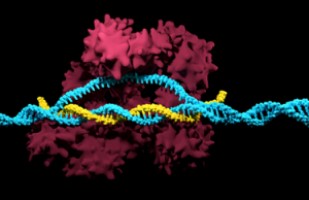While CRISPR has come to the forefront of many recent research discussions, multiple methods for creating genetically-engineered mouse models exist, explains Taconic Biosciences's Dr. Kenn Albrecht in a recent article in Cell & Gene. The most common techniques available to create a desired mouse model include:
Each method has its associated benefits and drawbacks, which is why working with an experienced model generation company to achieve research project goals is of vital importance:
 "It's difficult to discuss the genetic modification of animal models without CRISPR entering the conversation. While technologies like CRISPR/Cas9 have extended the boundaries of what is feasible for model development -- increasing the speed and efficiency with which genetic modification can be accomplished, while reducing costs -- the excitement and promise associated with CRISPR can create the misperception that it is always the best tool in the toolbox. This misperception can cause confusion, concern, or frustration for researchers who need a genetic modification for which CRISPR may not be the best approach."
Read the complete article at: cellandgene.com
"It's difficult to discuss the genetic modification of animal models without CRISPR entering the conversation. While technologies like CRISPR/Cas9 have extended the boundaries of what is feasible for model development -- increasing the speed and efficiency with which genetic modification can be accomplished, while reducing costs -- the excitement and promise associated with CRISPR can create the misperception that it is always the best tool in the toolbox. This misperception can cause confusion, concern, or frustration for researchers who need a genetic modification for which CRISPR may not be the best approach."
Read the complete article at: cellandgene.com
- Gene Targeting via Homologous Recombination
- Random and Targeted Transgenesis
- Gene Modulation via RNA Interference
- CRISPR/Cas9 system
Each method has its associated benefits and drawbacks, which is why working with an experienced model generation company to achieve research project goals is of vital importance:
 "It's difficult to discuss the genetic modification of animal models without CRISPR entering the conversation. While technologies like CRISPR/Cas9 have extended the boundaries of what is feasible for model development -- increasing the speed and efficiency with which genetic modification can be accomplished, while reducing costs -- the excitement and promise associated with CRISPR can create the misperception that it is always the best tool in the toolbox. This misperception can cause confusion, concern, or frustration for researchers who need a genetic modification for which CRISPR may not be the best approach."
"It's difficult to discuss the genetic modification of animal models without CRISPR entering the conversation. While technologies like CRISPR/Cas9 have extended the boundaries of what is feasible for model development -- increasing the speed and efficiency with which genetic modification can be accomplished, while reducing costs -- the excitement and promise associated with CRISPR can create the misperception that it is always the best tool in the toolbox. This misperception can cause confusion, concern, or frustration for researchers who need a genetic modification for which CRISPR may not be the best approach."
















.jpg)

.jpg)
.jpg)
.jpg)
.jpg)





.jpg)


.jpg)
.jpg)




.jpg)




.jpg)

.jpg)


